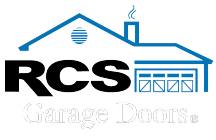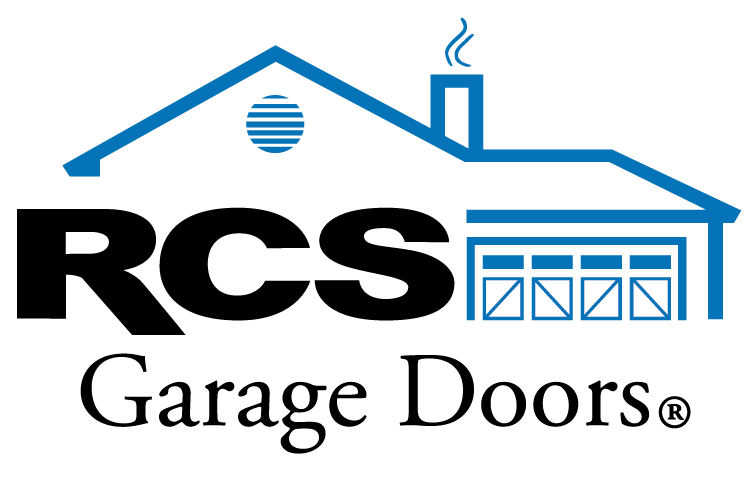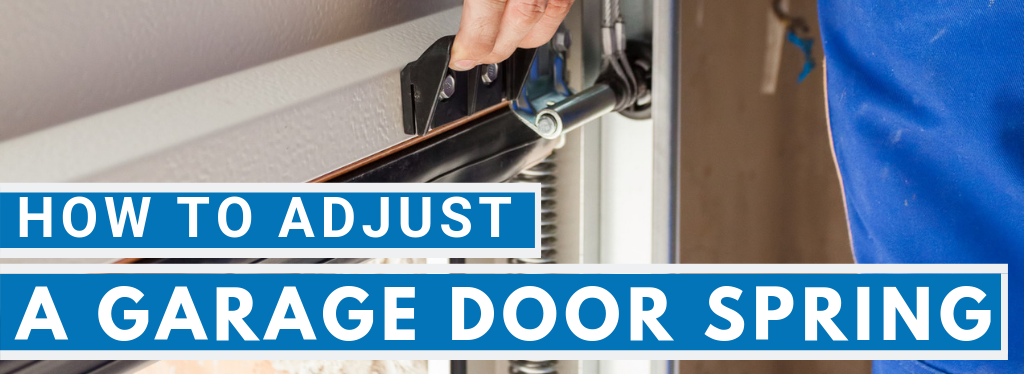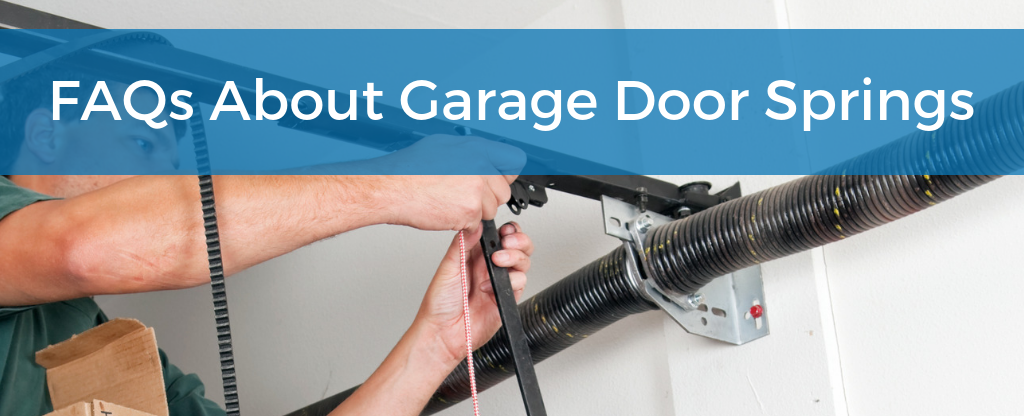Table of Contents:
- Different Types of Garage Door Springs and Cables
- Handling Problems With Garage Door Torsion Springs and Cables
- DIY Spring Repair
- Get Help From Experts
Your home’s garage door is a complex system of moving parts working simultaneously to provide you with convenient, reliable and secure entry to your home. With consistent daily use, it’s common for several parts of your garage door to succumb to normal wear and tear over time. Most at risk are springs and cables, which are under an extreme amount of tension, weight and pressure. There are many reasons why garage door springs or cables may snap/break, including:
- Aging/repeated use
- Lack of maintenance
- Objects striking the door
- Items jammed in the tracks
- Aggressive lifting/closing actions
If this occurs, you may find that your garage door does not want to open when prompted, will only partially open or may hang at an angle. If a garage door spring or cable has broken, the door is essentially out-of-service until a repair or replacement can be completed.
Call Our Service Team For Help
To understand the problem your garage door is experiencing, it’s important to get some background information on the equipment you’re dealing with.
Different Types of Garage Door Springs and Cables
Of your garage door’s system, the springs and cables are among the most important pieces contributing to smooth, safe movement. These parts use force to counterbalance the weight of the door and control its overall motion and tension, allowing the garage door to easily move up and down. When making repairs to your garage door, it’s important to understand what type of cable and spring system your door has. Most doors either have torsion or extension spring and cable operations.
- Torsion Springs and Cables: Of the two types of springs, torsion springs are the most commonly used in today’s garage doors. Torsion springs sit at the top of the garage door and slide into a channel while the door is in operation. These springs are available in several sizes based on the garage door’s weight, height and track radius. Along with the torsion spring are cables that are attached to the bottom of the door with a loop at one end and a stop at the other.
- Extension Springs and Cables: While an older garage door spring option, extension springs are still popular because they’re less expensive than torsion springs. They occupy less overhead space because they’re installed on either side of the door and extend when it’s opening and closing. Extension cables are available in standard options that are attached on each side of the door or as safety cables that are threaded through the spring. If the spring breaks, the cable will catch both ends and prevent it from flying throughout the garage.
Handling Problems With Garage Door Torsion Springs and Cables
When your garage door springs and cables are too loose, you’ll notice your door struggling to open — the door will be too heavy for the opener to raise and lower alone. Before you break out your tools and try to begin any garage door spring tightening tasks, it’s important to note that because the springs are under extreme weight and tension, it’s remarkably dangerous for inexperienced homeowners to make repairs or garage door spring adjustments themselves.
A garage door’s springs, drums, brackets and lifting cables work together to make your door function properly, and you’d need to know how each works in conjunction with the others to attempt a repair. Without the right tools and knowledge, you could cause serious injuries to yourself and those around you. A malfunctioning spring can cause your garage door to slam shut on anything in its path. This exact situation has caused many lacerations, broken bones and even deaths. That’s why it’s essential to trust your garage door spring repair to a qualified service professional.
A garage door professional will examine your door for any potential problems before using the proper tools to perform a repair. They’ll secure the door in place and tighten the spring to ensure a proper fit. While the technician is tightening your garage door torsion spring, they can also adjust the cables if needed by moving them further down the frame, securing them into a new hole and using pliers to make sure the cable bracket is taut.
Why DIY Spring Repair is a No-No
Due to the inconvenience the situation of a broken garage door can create, it stands to reason that it should be taken care of as soon as possible. However, many homeowners think they can take the do-it-yourself approach here, as they would for many other projects around the home. However, we highly recommended against DIY garage spring repair due to potential safety risks and vulnerabilities for homeowners, their families and their property. Here’s why:
“My neighbor did it, I should be able to do it, too.”
The counterweight system, which is secured by the springs, is connected to the hinge at the bottom of the door, to the lifting cable and to the steel shaft housing the spring. The entire system is under extreme tension, equivalent to the total weight of the door. Trying to lift the bottom hinge that is solidly bolted to the door is like lifting anywhere from 125lb (single door) to 225lb (double door). If you also have a row of windows on your door, add about 5 to 15lb per window. One false move and you could end up injuring your face or hand.
“Only one of the two springs broke.”
Even if you think it’s only 50% of the weight of the door that’s being held, you should know that it’s still too much. The most important thing is your safety – especially avoiding any serious injury. In the end, you also have to properly balance the two springs in order to prevent your door from rebounding.
“My garage door opener will hold the door.”
The drive mechanism that pulls the door to lift or lower it wasn’t designed to hold that much weight. A garage door opener is simply a substitute for human action; as if you were to lift your door with one hand. A well-balanced door weighs between 8 and 10lb and the acceptable variance for proper balance is around 5% of the total weight of the door.
Do business only with licensed professionals. Garage door spring repair requires experience and expertise. It is important to correctly calculate the total weight of your garage door, including any attached parts while also accounting for the weight of the windows if any. The reality is, only garage door professionals are legally prepared and educated to perform these fixes. Trust the professionals to protect your safety as well as others’.
Your home’s garage door is the largest access point and as such is the biggest security concern. That means you want to be sure it stays in top working order at all times. Besides making sure that the integrity of the garage door itself is maintained, you should also pay attention to the operation of the garage door springs. Here are a few of the most frequently asked questions about the springs, also known as torsion springs.
- Why do replacement garage door springs come in a two-pack? Both springs on your garage door are getting the same amount of wear and tear, so if one has broken, you should go ahead and have both replaced as the other is not far behind. As a side note, if you happen to have a garage door that was installed with just one torsion spring, ask about converting it to two as it is a better option overall and isn’t that much more expensive to replace two than it would be for just one.
- If the new springs look exactly the same and are the same length, do I have the right ones? Maybe, or maybe not. There is more to garage door springs than length and appearance, so when in doubt, consult with a professional. Using springs that aren’t rated for your garage door could result in problems down the road even if you do manage to get them installed.
- How often should I have the garage door springs replaced? Garage door springs don’t have a “best by” date – their lifespan goes by how many cycles they have been put through. If you use the door quite frequently, you’d be looking at 3-6 years; infrequently perhaps as much as 9 or 10 years. Regular maintenance visits are the best way to keep an eye on them so they can be changed when they show signs of wearing out.
If you have additional questions about garage door springs or you would like to have yours inspected and/or replaced, contact us.
For Help With Your Garage Door Spring Adjustment, Call RCS Carolina Garage Doors
Making adjustments to your garage door can be hazardous for inexperienced homeowners, so when you need to tighten your garage door springs and cables, trust the highly trained and knowledgeable technicians at RCS Carolina Garage Doors. We have decades of garage door repair and maintenance experience throughout North and South Carolina, including the Charlotte, Huntersville and Matthews areas.
If a broken garage spring or cable is causing an inconvenience for you and your family, you can rely on the technicians at RCS Carolinas to be equipped with the tools and training to get your garage door back in working order, and don’t forget about our 24/7 emergency response service. We look forward to serving all your garage door needs, including repairs, maintenance, and replacement garage doors.
To learn more about our garage door spring adjustment and repair services, call us today at 704-523-8063 or complete our online contact form to request services.



